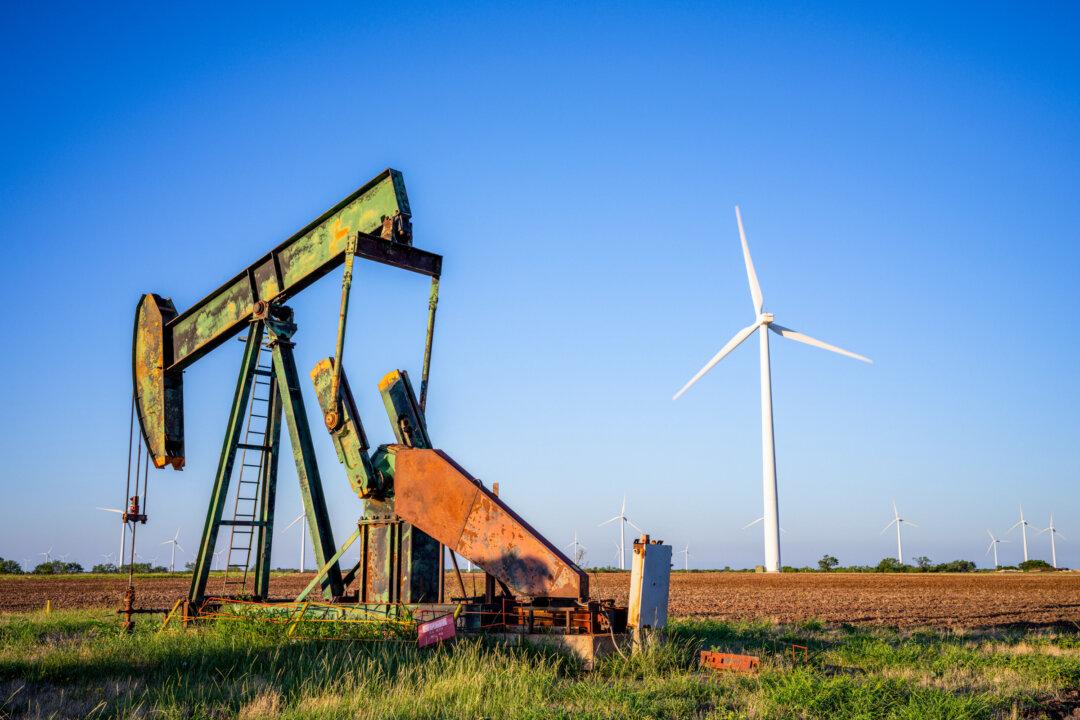The U.S. Energy Information Administration (EIA) is sticking with its previous projections that demand for domestic oil will decline in the next decade, while natural gas production flatlines, and non-nuclear renewable energies continue to grow. However, it noted that the April document is based on “assumptions” that have been dramatically altered since President Donald Trump returned to the White House.
In fact, the EIA said its analysts gamed out in developing the outlook that overall, “U.S. energy consumption in 2050 is lower than in 2024 in most of the scenarios,” which varies little from its 2023 and 2024 versions.
The EIA’s projections are based on scenarios assembled in December, when President Joe Biden was still in office. The EIA falls under the Department of Energy for which it collects and analyzes energy-related statistics.
“In most of the cases we modeled, we only considered laws and regulations implemented as of December 2024,” the EIA’s outlook explained. “Legislation, regulations, executive actions, and court rulings after that date are not included.”
Department of Energy spokesperson Andrea Woods said that the outlook basically ignores the significant scenario-altering events, such as the raft of executive and regulatory actions, that Trump has taken since assuming office in January. But it will serve as a record of the path that American energy production was on before Trump was elected.
Of nearly 125 executive actions issued by Trump since January, more than 30 to date have been related to boosting energy production under the president’s “unleash America’s energy” policies, which call for using the nation’s abundant oil, gas, and coal reserves to generate the electricity needed to affordably meet tripling demand for power, while exporting liquified natural gas to trim the $37 trillion federal debt.
The outlook “reflects the disastrous path for American energy production under the Biden administration—a path that was soundly rejected by the American people last November,” she said. “By unleashing energy that is affordable, reliable, and secure, this administration is ensuring America’s future is marked by energy growth and abundance—not scarcity.”
EIA analysts made educated guesses, or “a range of assumptions,” in December based on scenario-changers that appeared obvious before Trump arrived in the Oval Office.
Among them are presumptions the Environmental Protection Agency’s power plant and vehicle tailpipe emissions rules, and California’s 2035 zero-emission vehicle sale mandate, will “not be in place” by the end of 2025. Agency Director Lee Zeldin in March suspended implementation of both federal rules, pending a review.
The EIA said the 2025 outlook also includes “significant updates” including the addition of a hydrogen market module; a carbon capture, allocation, transportation, and sequestration module; and an enhanced upstream oil and natural gas resources module.
Fossil Fuels Down, Renewables Up

Despite the exclusions and enhancements, the forecast remained the same as it had for two years: oil production and consumption will decline in coming decades, while natural gas demand will remain steady but only marginally increase by 2050.
Of course, Trump has issued executive orders and policy directives designed to “unleash Alaska’s energy” and repeal Biden-imposed restrictions on offshore oil and gas leasing.
The EIA’s outlook states last year’s record production by the lower 48 states led to the best export year ever for domestic operators, who in 2024, eclipsed the annual export record they set in 2023, although only by 1 percent—a significant slowdown after oil production increased by 14 percent in 2023 and 21 percent in 2022.
By 2050, the EIA forecasts U.S. crude oil production will decline by 0.7 percent, oil consumption will dip by 0.8 percent, while prices are predicted to increase between 0.5 to 0.6 percent relative to inflation.
Woods dismissed the projections, noting they’re based on the assumption that “laws and regulations that were in effect as of December 2024 remain in effect through 2050” which, as evidenced by the president’s Alaska and offshore executive actions, have been untrue as of January 2025.
The forecasts do, however, reflect what commodity analysts and the industry itself forecasts.
During March’s CERA Week by S&P Global in Houston, Texas, Occidental Petroleum Corp CEO Vicki Hollub and ConocoPhillips CEO Ryan Lance were among executives to predict that U.S. oil production will peak between 2027 and 2030 and then plateau over the next decade.
Among reasons they cited for slower “output growth” is increasing pressure for bigger shareholder returns in growing output by injecting carbon dioxide into existing wells to pump out up to 20 percent more oil in shale reservoirs before expanding into new plays.
Liquified natural gas exports, however, are projected to nearly double between 2025 and 2050, the outlook projects.
S&P Global’s 2024 outlook forecasts a decline of 12 percent “in power sector natural gas demand” by 2029 compared with 2023 because of a predicted “sharp increase” in 2025 and 2026 in natural gas prices fostered by increasing demand for liquified natural gas exports “with production growth chasing the [export] feedgas escalation pace.” Feedgas is natural gas that is converted into liquefied natural gas.
Under this scenario, S&P said, “Coal could also claw back some market share from gas from 2025 as higher gas prices lead to a reversal of the coal to-gas switching happening in 2023-24.”
The EIA’s 2025 outlook projects demand for coal will continue its two-decade decline with demand about one-third of what it is today.
“Just last week,” Woods said, Trump and the Department of Energy “announced a series of new actions that will modernize U.S. coal technologies and promote coal-fired power generation.”
The 2025 outlook by EIA analysts doesn’t see nuclear energy advancing much beyond its current use in power generation. It projects that nuclear energy will peak in 2026, dip a bit by 2036, and stay relatively flat with slight declines through 2050—an overall decline of 0.2 percent between now and 2050.
S&P Global’s 2024 outlook attributed some declines in oil and gas, especially in context of electricity generation, to the “massive buildout of renewables,” particularly solar and wind, which can be difficult to measure on a utility scale since much of these energies are “behind the meter”—meaning not linked to the grid—and generate relatively small amounts of power.
The EIA’s outlook estimates renewable energy production will double by the mid-2030s and nearly double again by 2050, predicting a 6.7 percent annual increase.







